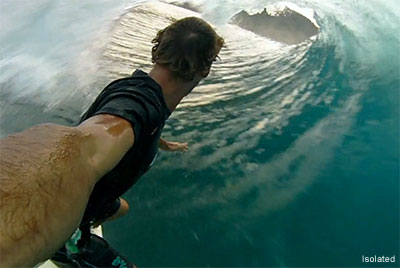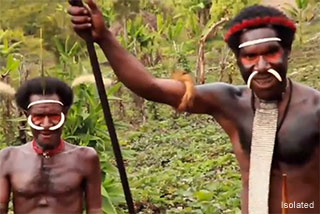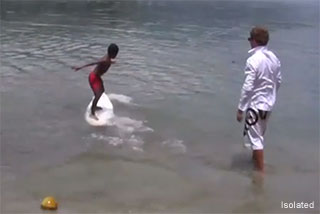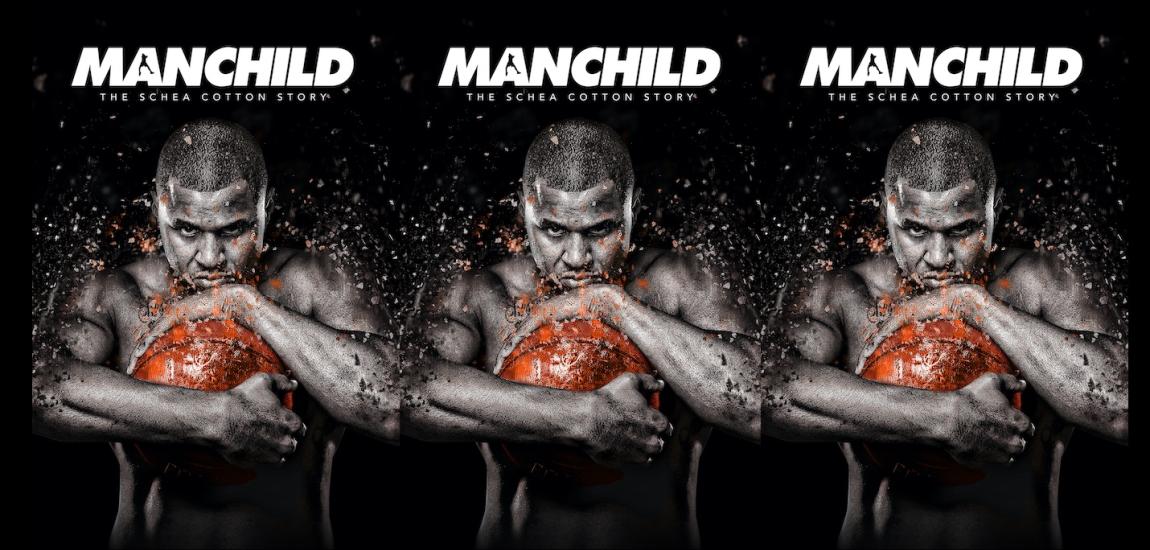If you can avoid getting a chunk taken out of you by a tiger shark, and you are lucky enough to not detonate an underwater mine left over from World War II, and you don't crush your skull or fracture your spine on a shallow break that you're unaware of, surfing the uncharted waters off New Guinea would be considered a good time for the average wave rider. As it stands, it's a great time, albeit a harrowing adventure, for the feral surfers starring in the new documentary Isolated by executive producer Ryan Phillippe.
"I always wanted to document feral surfers who go to the most remote surf spots," director Justin Lepera says. "I wanted to find a place that would really test them. I researched for four years. You could get all kinds of information about Papua and New Guinea, but there was only one book written in 1989 on the West Papua side."

In fact, the entire area that Lepera wanted to film in is known as a journalist-dead zone. With such a lack of information about the island, Lepera packed everything from anti-venom for snakebites to a staple gun for closing cuts and lacerations. And of course, cameras, equipment, surfboards and tools they’d need to catch their own food.
What ensued was a surf documentary that morphed into an Indiana Jones movie that evolved into a humanitarian film.
"I knew how primitive the area was and I knew nobody had ever documented it," Lepera says. “It had everything you could ever imagine for a full-on adventure and it showed what surfers were willing to do to find the ultimate wave."
More importantly, it showed where they were willing to go, which included parts of the island that were known to be inhabited by cannibals, along with other island sections where villagers had never seen foreigners before. This was especially true when it came to the children.

In one of the more memorable scenes in the film, Lepera and his band of surfers come across a group of children who are used to body surfing with driftwood and small planks found in the ocean. When surfers break out their boards and show the children how to ride the waves they experience unbridled joy.
"For some kids, it was the first time they had ever seen white people,” Lepera says. "The adults were so generous. The moment we got there we were amazed at how open they were. They immediately offered us everything they had without asking for anything in return. They live off the earth. They love the ocean. Giving them surfboards provided them a new thing they could do in the ocean."
The generosity of the villagers also extended to travel, as the surfers relied mostly on locals to take them around the island.
"Basically we just offered them money,” Lepera says. “When we'd get dropped off at one village we’d have to use other villagers’ boats to keep going farther up the coast. The money wasn’t a big deal to some villagers, so we’d trade them our own goods like flashlights and things we had extra of. We’d also give them fish we caught."
Other than travel one of the larger hurdles for the crew was to actually locate the waves they wanted to surf.

"When we talked to the locals they didn't give us a whole lot of information,” Lepera says. "Lots of the coastline there is just large cliffs."
In searching for waves the team looked at a few key things: how a wave was breaking and the size of the swells. From there they kind of just figured it out.
"In addition to the sharks and the underwater mines and everything else, there was no help if someone gets hurt,” Geoff Clark, the film's producer, says. “If they got hurt, they’re on their own. That’s one thing in the film you can’t really feel."
The other thing you can’t feel, but you most certainly see, is the political tension and strife that exists on the island.
As the documentary veers between a film about humanity and surfing to one about local tribal struggles, the surfers find themselves in the middle of life-or-death situations that are far scarier than anything they face in the water. At one point, Lepera says they all thought there was a chance that they wouldn't survive.

"The only time I second-guessed the film was when one of our surfers, Travis, set up a meeting with some really prominent political figures,” Lepera says. “He set up a meeting in the middle of the jungle, but they weren't there. At that point we were told to go to a hotel room and that if we heard a certain knock, we should open the door, but if we heard a different knock, we should run. We really didn’t know if we were going to be killed."
Needless to say, Lepera and his surfers weren't killed, but they made a killer film and to give any more away wouldn't be fair. Check out the trailer at Isolated.tv.
-- Jon Finkel is the author of The Dadvantage: Stay In Shape On No Sleep With No Time And No Equipment and co-author of Heart Over Height with Nate Robinson. Follow him on Twitter @Jon_Finkel.




